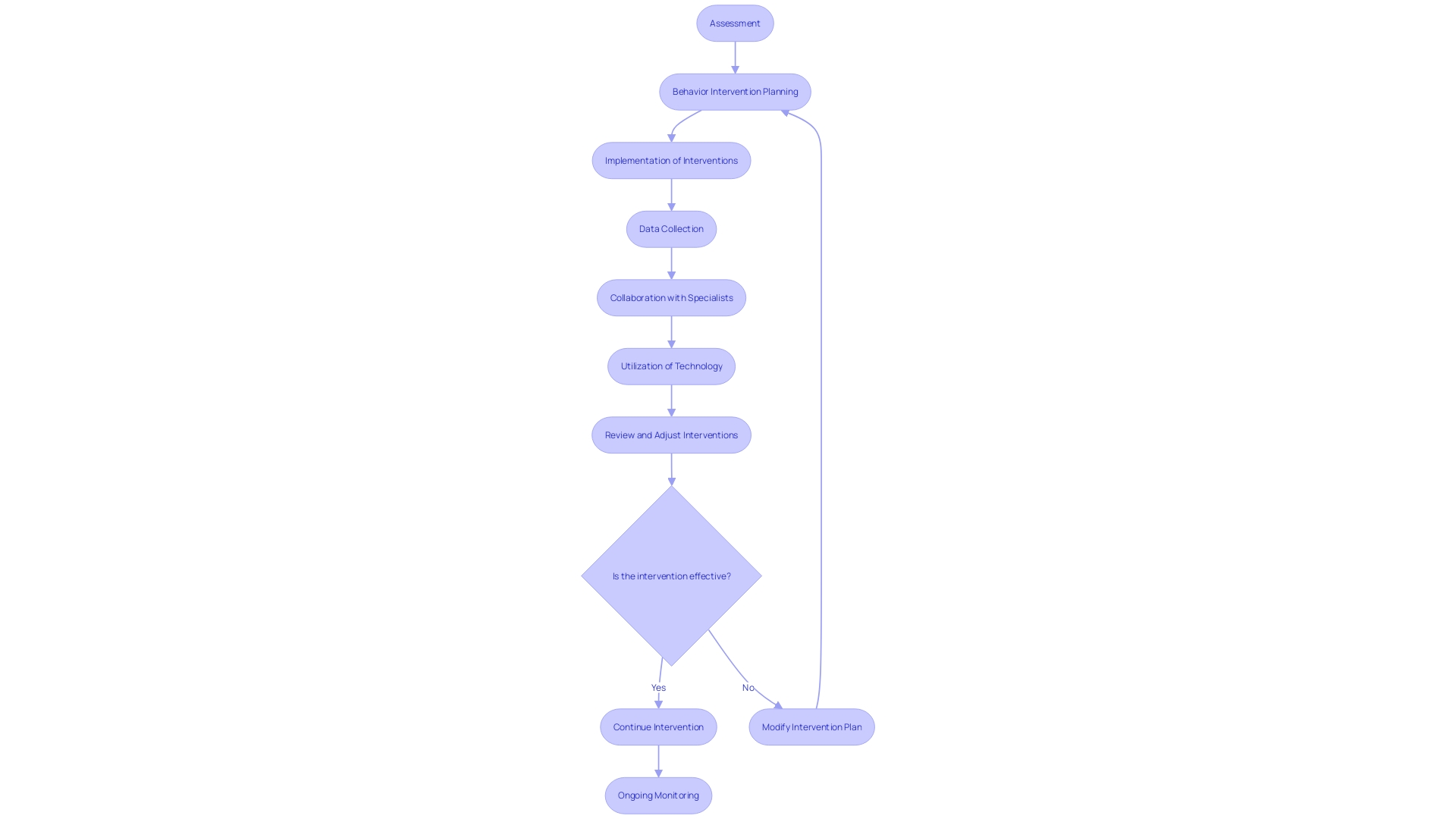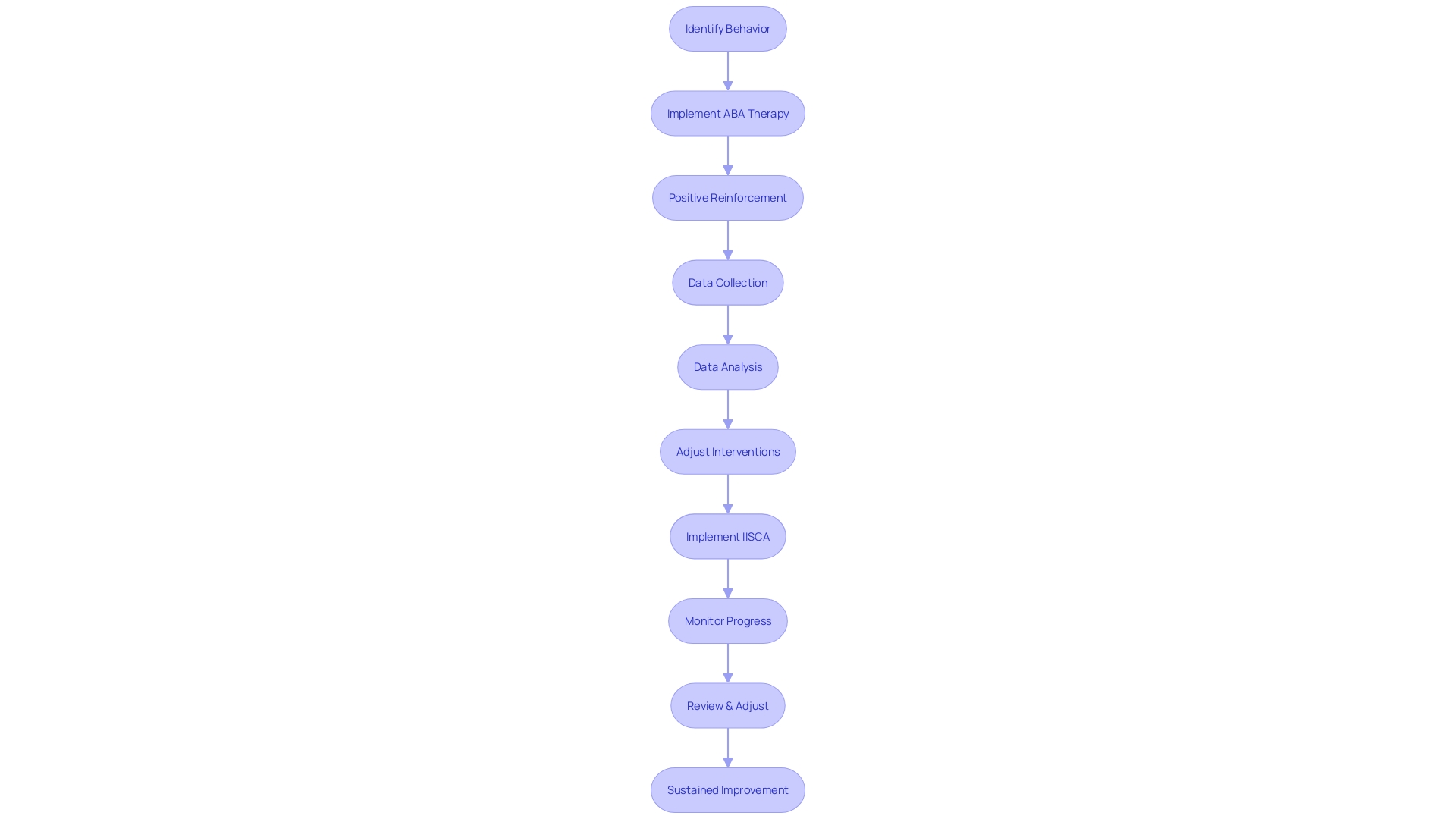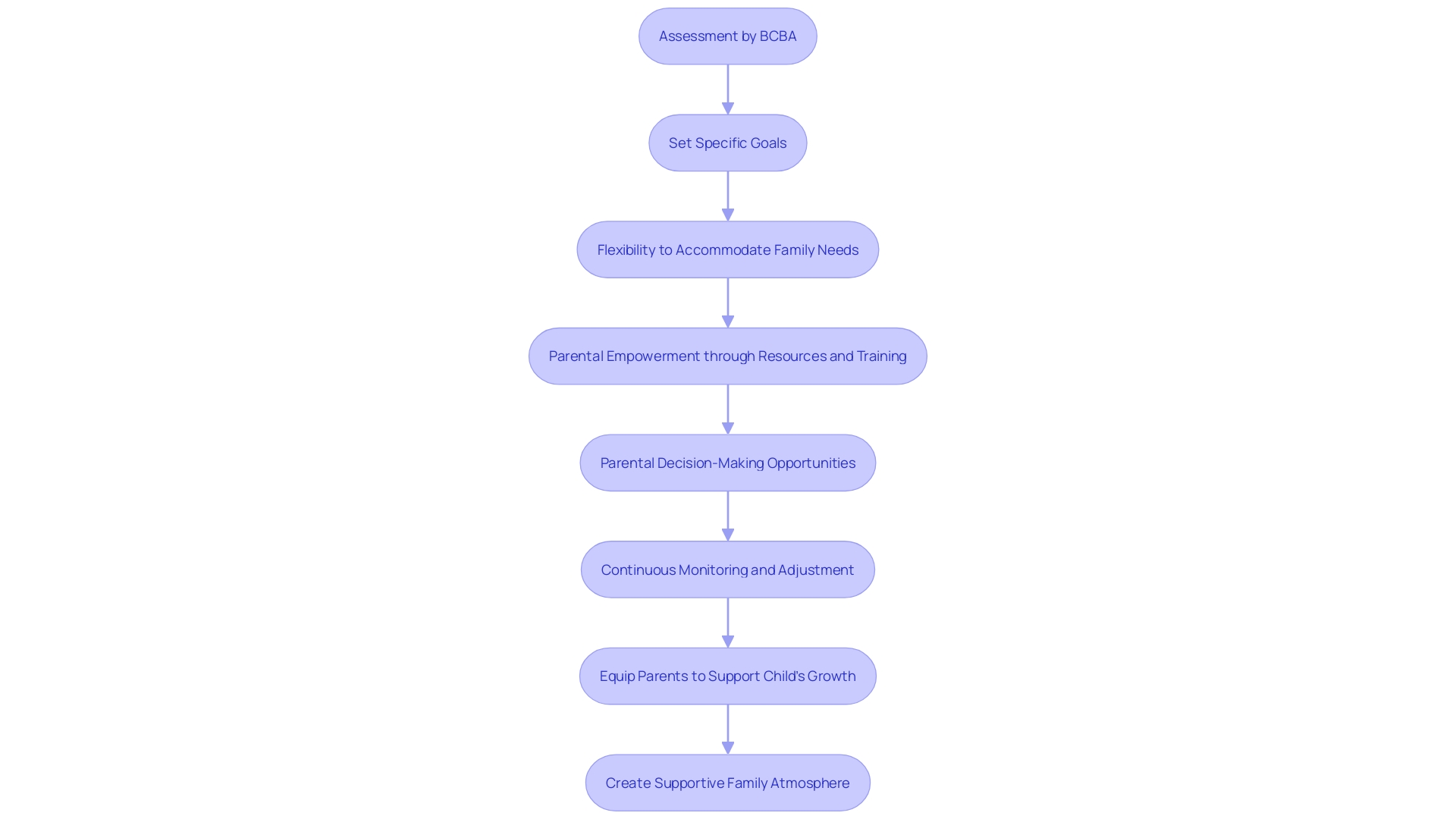Introduction
ABA therapists are highly trained professionals who play a crucial role in providing specialized care for individuals with autism and related developmental disorders. With their wealth of clinical expertise and focus on leveraging technology, these therapists go beyond traditional patient care to ensure the well-being of their clients. They navigate various treatment environments with ease, optimizing care coordination and review processes among healthcare providers and insurance plans.
Through their dedication to quality intervention research, ABA therapists contribute to advancing the practice, ensuring that interventions are effective and considerate of the individuals' needs. In this article, we will explore the role, responsibilities, settings, skills, and techniques used by ABA therapists, as well as the importance of collaboration and continuous training in this field. Let's dive into the world of ABA therapy and discover how it empowers individuals and their families.
What is an ABA Therapist?
ABA therapists are highly trained professionals armed with a wealth of clinical expertise, often backed by state licensing and board certification. Their role transcends beyond traditional patient care; they are innovators in leveraging technology to enhance therapeutic outcomes. With over ten years of experience, these therapists are adept at navigating various treatment environments and have a keen eye for optimizing care coordination and review processes among healthcare providers and insurance plans.
Their technological interventions are designed to uphold the highest standards of care, ensuring that individuals with autism and related developmental disorders receive not just treatment, but a coordinated, quality therapy experience that is tailored to their evolving needs. Furthermore, the emphasis on quality intervention research highlights the importance of such professionals in the field of ABA therapy. Through critical evaluation, they contribute to advancing the practice, ensuring that interventions are not only effective but also respectful and considerate of the individuals’ well-being.
Role of an ABA Therapist
ABA therapists, as New York state-licensed and Board-Certified Behavior Analysts, bring a wealth of clinical knowledge to the table, often with over a decade of experience in direct patient care across diverse treatment settings. Their role transcends beyond individual therapy; they are instrumental in developing treatment plans that are not only personalized but also integrate cutting-edge technology solutions. These solutions are crafted to align with best practice standards, ensuring that patients receive high-quality, coordinated care.
With the aim to reduce challenging behaviors and enhance social interactions, ABA therapists employ evidence-based strategies that are rigorously tested for efficacy. The dedication of these professionals to teaching new skills is reflected by their commitment to continuous improvement and innovation in their field, which ultimately benefits individuals with autism and their families.
Responsibilities of an ABA Therapist
An ABA therapist's role is multifaceted, with a focus on fostering growth and development for individuals with behavioral challenges. These professionals are adept at identifying personal strengths as well as growth opportunities through comprehensive assessments. Their expertise is not confined to patient interaction alone; they also design detailed behavior intervention plans tailored to each individual's needs.
The implementation of these interventions is a critical aspect, involving steady monitoring and data collection to track progress and adapt strategies accordingly.
Collaboration is key in ABA therapy, and therapists often work in concert with other specialists, including speech and occupational therapists, to provide a holistic approach to care. This interdisciplinary collaboration ensures that interventions are well-coordinated, offering the best possible outcomes for individuals. With technology advancing, ABA therapists are increasingly utilizing innovative solutions to streamline care coordination and review processes, enhancing the quality of care provided.
These advancements in technology and best practices contribute significantly to the high standards of coordinated, high-quality care that ABA therapists strive to deliver.

Settings Where ABA Therapists Work
Board-Certified Behavior Analysts (BCBAs) are highly trained professionals who apply their expertise across diverse environments to support individuals with autism and ADHD. These settings may range from educational institutions to clinical practices, encompassing community hubs and even the comfort of a client's home. Tailoring their approach, BCBAs may conduct one-on-one sessions or facilitate small group interactions, adapting to the unique requirements of each person and the objectives set forth in their personalized therapy plan.
Recent updates by the Council of Autism Service Providers have underscored the necessity for high-quality ABA implementation, aligning with the innovative technology solutions aimed at elevating coordinated care, a standard rigorously pursued by seasoned BCBAs in the field. As the prevalence of autism diagnoses rises, reflecting an evolved understanding of its spectrum, the demand for adaptable and effective ABA services grows, necessitating flexible work models for BCBAs that also cater to their professional well-being.
Skills and Qualifications Required
Becoming a proficient ABA therapist requires a unique blend of skills and expertise. It's not just about having keen observational abilities but also about mastering the art of communication to connect with individuals on a deeper level. Analyzing and interpreting nuanced data is crucial in tailoring ABA interventions to each person's distinct needs.
The field demands a thorough grasp of ABA principles, which is often validated through professional certifications like the RBT or BCBA. These credentials are more than just titles; they reflect a commitment to best practices and high-quality care, as seen in the work of seasoned professionals who leverage their clinical experience to forge technology solutions that benefit both providers and patients. Their dedication to coordinated care and streamlined processes exemplifies the level of expertise and holistic understanding required to excel in ABA therapy.
How ABA Therapy Helps Individuals with Autism
Applied Behavior Analysis (ABA) therapy stands out as a transformative tool in the field of autism treatment. At the heart of ABA lies a commitment to enhance positive behaviors and diminish those that may be challenging, employing a suite of strategies tailored to each individual's needs. Seasoned ABA therapists, like New York state-licensed and Board-Certified Behavior Analysts, harness over a decade of clinical expertise to apply techniques such as positive reinforcement and prompting.
These methods are not just theoretical; they are grounded in rigorous research, including randomized-controlled trials which are the gold standard in clinical research. As a result, ABA therapy has evolved into a sophisticated intervention that breaks down complex behaviors into smaller steps, enabling individuals with autism to hone skills critical for communication, social interaction, and academics.
In light of the dynamic landscape of autism diagnoses, it's vital to recognize that ABA therapy isn't a one-size-fits-all solution. The nuanced understanding of autism as a spectrum means that interventions must be as varied as the individuals they serve. The goal is to empower every person with autism to reach their unique potential, acknowledging that while some may have intellectual impairments, others possess high IQs and communicative abilities.
This individualized approach is reflected in the innovative technology solutions created by experts to ensure coordinated, high-quality care that adheres to best practices.
Moreover, intervention research, such as the critical evaluation of non pharmacological intervention studies designed for autistic children, underscores the importance of high-quality research methodologies. The aim is to discern the effectiveness, scope, and safety of interventions. As we continue to adapt and refine ABA therapy, the insights of those with autism, both within and outside the research community, are invaluable.
They have been at the forefront of advocating for research integrity and respect, shaping the way we support individuals on the autism spectrum today.
Techniques and Strategies Used by ABA Therapists
Board Certified Behavior Analysts (BCBAs) employ a personalized approach to ABA therapy, utilizing techniques like discrete trial training, naturalistic teaching strategies, and functional communication training. These interventions cater to the unique needs of individuals with autism, aiming to foster positive behavioral changes and skill development. Recent guidelines released by the Council of Autism Service Providers underscore the necessity for high-quality, tailored ABA therapy.
As autism diagnoses continue to increase, with a shift from 1 in 2,500 to 1 in 36 individuals, the importance of adaptable and individualized treatment plans has become more evident. A successful ABA program begins with a comprehensive assessment by a BCBA, setting specific goals for each child. Continuous progress monitoring and adapting strategies are crucial for ensuring ongoing benefits.
Flexibility in service delivery is essential, considering the varied needs and schedules of families. This comprehensive, flexible approach ensures coordinated, high-quality care that aligns with the evolving understanding of autism's diverse presentations.

Collaboration with Other Professionals
In the dynamic field of Applied Behavior Analysis (ABA) therapy, practitioners recognize the importance of a multidisciplinary approach to address the complex needs of individuals with autism. The integration of expertise from speech therapists, occupational therapists, psychologists, and educators enriches the therapeutic landscape, offering a more holistic intervention strategy. Each professional contributes a unique perspective and set of skills, creating a comprehensive support system that promotes the overall development and well-being of the individual.
By engaging in collaborative practice, ABA therapists and their allied health colleagues are better positioned to tackle the multifaceted challenges faced by those with autism. This synergy not only enhances the quality of care but also ensures that interventions are seamlessly woven into the fabric of the individual's daily life, facilitating continuity across various environments such as school, home, and community settings.
Through combined efforts, these professionals can design personalized interventions that are responsive to each individual's needs, capitalizing on their strengths and addressing areas for growth. This approach aligns with the ethos of delivering care that respects the dignity of each person and supports their meaningful participation in society, thus contributing to a fairer 'race' for children and youth with disabilities, as envisioned by the late Dr. David Offord.

Importance of Continuous Training and Supervision
Ensuring that ABA therapists are equipped with the most current knowledge and methodologies is crucial for the efficacy of their practice. With a foundation of over ten years of clinical expertise, specialists in the field emphasize the importance of integrating cutting-edge technology and streamlined processes to elevate the standard of care. This commitment to excellence is evidenced through the development of technologies that aid providers and health plans in delivering coordinated and high-quality care.
In the dynamic landscape of ABA therapy, continuous education allows therapists to evolve their strategies and personalize interventions to resonate with each individual's journey and progress. Moreover, the mentorship from seasoned professionals plays an integral role in honing the clinical acumen of ABA therapists, ensuring that their decision-making is informed and their approach to care is both compassionate and competent. As Dr. David (Dan) R. Offord poignantly expressed, creating equitable opportunities for children, including those with disabilities, hinges on our ability to understand and meet their needs while minimizing stressors and maximizing support for their caregivers.
Challenges and Considerations in ABA Therapy
ABA therapy, standing for Applied Behavior Analysis, involves tailored treatment plans that are as diverse as the individuals it serves. With the prevalence of autism now at 1 in 36, a broad spectrum of needs must be met. Experienced ABA professionals, like Board-Certified Behavior Analysts with a decade of clinical knowledge, are pivotal in navigating this complexity.
They leverage direct patient care experience and strategic management skills to create technology-driven solutions, enhancing the coordination and quality of care across various settings. As the landscape of autism services advances, ABA practitioners incorporate flexibility in their roles, responding to the evolving definition of autism and the unique challenges it presents. This has spurred innovative approaches such as hybrid work models, which not only attract top talent but also accommodate the multifaceted lives of those dedicated to the field.
Within this dynamic environment, ABA therapists persistently address the diverse behavioral needs of individuals, ensuring the generalization of skills and best practices amidst a rapidly expanding understanding of autism.

Conclusion
In conclusion, ABA therapists are highly trained professionals who leverage technology and their clinical expertise to provide specialized care for individuals with autism and related developmental disorders. They contribute to advancing the practice through quality intervention research, ensuring effective and considerate interventions that meet the evolving needs of individuals.
ABA therapists go beyond traditional patient care by developing personalized treatment plans and integrating cutting-edge technology solutions. Collaboration with other specialists and the use of innovative solutions streamline care coordination and enhance the quality of care provided.
Working across diverse settings, ABA therapists adapt their approach to meet the unique needs of each individual. Their skills in observation, communication, and ABA principles, validated through professional certifications, ensure high-quality care.
ABA therapy stands out as a transformative tool in autism treatment, employing tailored strategies grounded in rigorous research. Collaboration with other professionals allows for a comprehensive approach that promotes overall development and well-being.
Continuous training and supervision are crucial for ABA therapists to stay up-to-date and provide the best care possible. Their commitment to integrating technology and streamlining processes elevates the standard of care and ensures ongoing improvement.
In conclusion, ABA therapists are confident, supportive, and empowering professionals dedicated to the well-being of individuals with autism and their families. Through their expertise, collaboration, and continuous training, they contribute to the advancement of the practice, empowering individuals to reach their unique potential.




